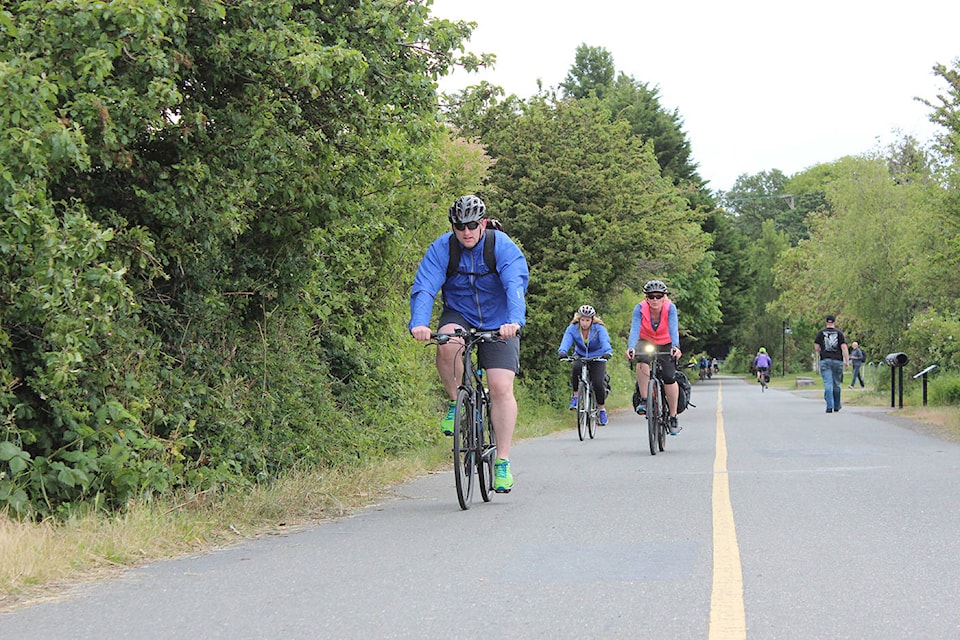It’s no surprise that Bike to Work Week has seen good takeup this week around Victoria and surrounding communities.
Our moderate weather and consistently improving infrastructure provide the means for experienced and novice cyclists alike to choose an alternative to driving to their workplace in the mornings.
Greater Victoria already has a significant number of commuter cyclists who use the Galloping Goose Trail or E&N Rail Trail to avoid the inevitable traffic – on the Trans-Canada Highway, Island Highway/Craigflower Road and other inbound routes.
The nice part about the now 22-year-old Bike to Work Week is that it provides motivation and inspiration for people who might not have tried cycling to work before, with special gatherings held at various points on the main commuter routes, and fun competitions among workplace teams.
In previous years, the lack of facilities at the end of the line for cycling commuters, such as secure bike lockups and showers, has been a deterrent for people who wear business attire for work and cringe at the idea of smelling like they just had a workout – which for many, biking to work is.
But as more modern buildings come on stream downtown and companies recognize the need to provide such options for their employees, more people are choosing to ride in as a good way to start a productive work day.
The number of part-time cycle commuters taking part this week, and the popularity of the two-way bike lanes on Pandora Avenue, shows the demand is there on the part of the public.
We encourage our local municipalities to continue listening and paying attention to what people want, and invest in cycling infrastructure, as a way to promote good health.
